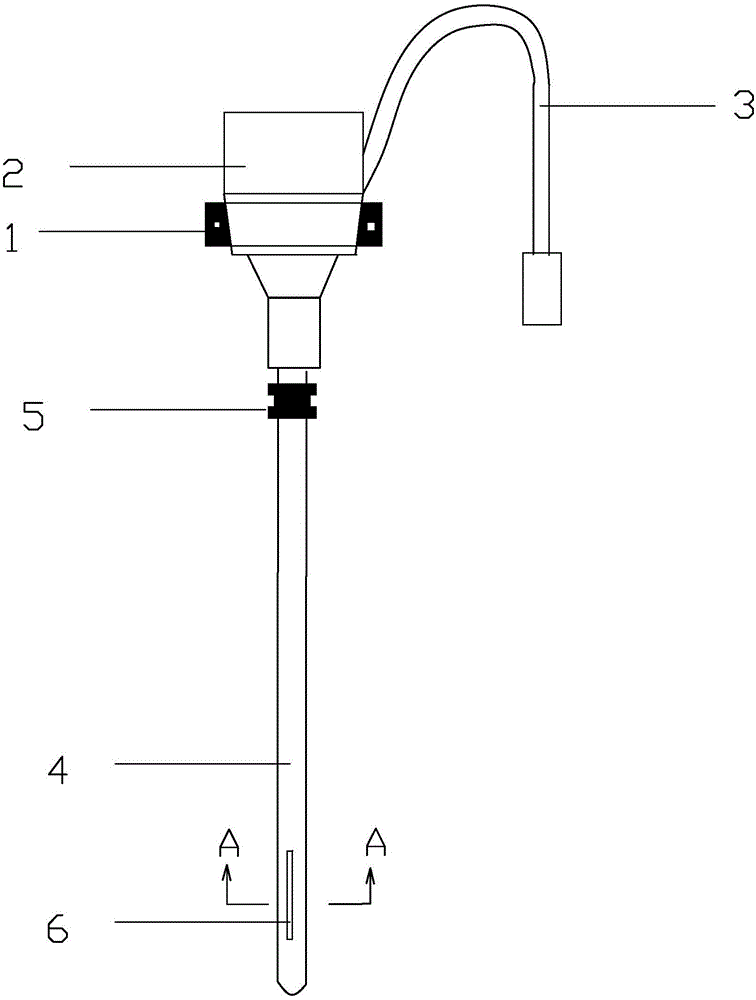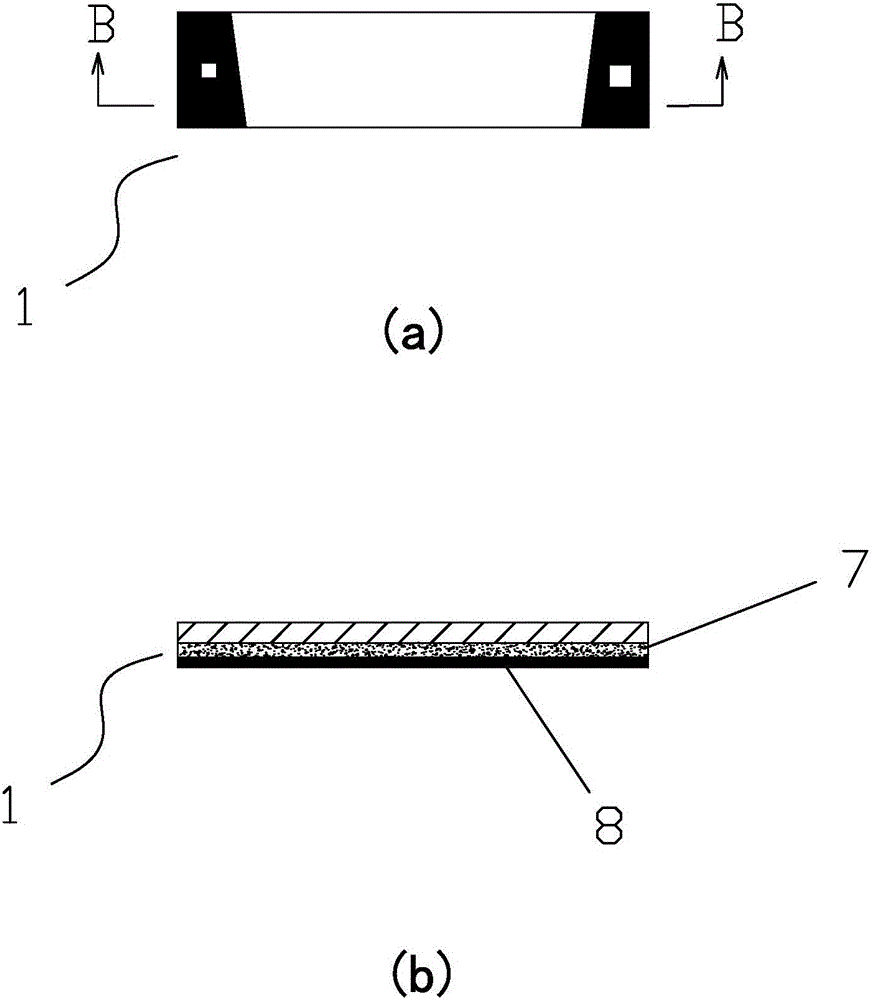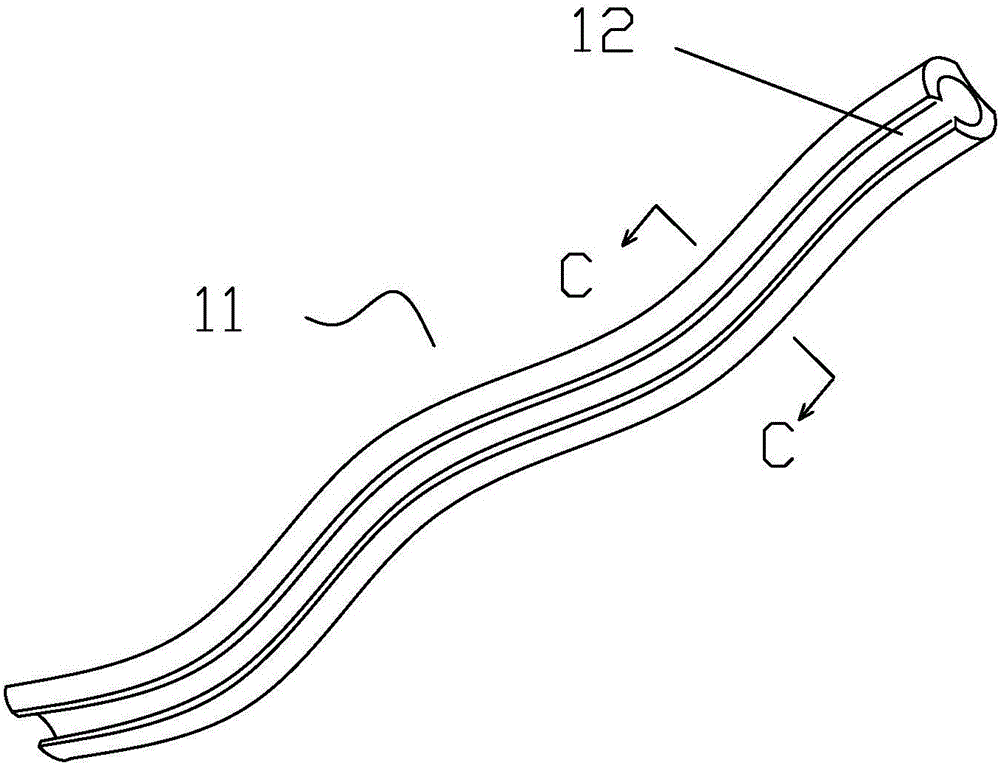A kind of run-proof tubular venous catheter
A venous catheter and catheter technology, applied in the direction of catheters, etc., can solve the problems of large infusion resistance, increase the workload of patients suffering from medical staff, and the tube body falls off, and achieve the effect of preventing repeated punctures, ensuring life and health, and reducing workload.
- Summary
- Abstract
- Description
- Claims
- Application Information
AI Technical Summary
Problems solved by technology
Method used
Image
Examples
Embodiment 1
[0036] As attached Figure 1~4 ,and Figure 8 As shown, 1 is the catheter fixing wing of the anti-run tube type venous catheter of the present invention, 2 is the connecting seat, 3 is the extension tube, 4 is the catheter, 5 is the buoy, 6 is the gap, 7 is the adhesive layer, 8 is the protective layer , 9 is the inner lip, 10 is the outer lip, 11 is the fixed sleeve, 12 is the opening, 13 is the clamping part, 14 is the sleeve body, 15 is the second adhesive layer, and 16 is the second protective layer.
[0037] The anti-running tube type venous catheter of the present invention sequentially includes a catheter 4 connected and communicated, a connecting seat 2, an extension tube 3, and a fixed ferrule 11 used in conjunction with the catheter 4; the catheter 4 is a needle at the opening position of the connecting seat 2 Seat structure, the puncture needle is inserted into the catheter 4 through the needle seat structure; the extension tube 3 is connected to the connecting seat 2 a...
Embodiment 2
[0040] As attached Figure 1~3 and Figure 5 , 9 As shown, 1 is the catheter fixing wing of the anti-run tube type venous catheter of the present invention, 2 is the connecting seat, 3 is the extension tube, 4 is the catheter, 5 is the buoy, 6 is the gap, 7 is the adhesive layer, 8 is the protective layer , 9 is the inner lip, 10 is the outer lip, 11 is the fixed sleeve, 12 is the opening, 13 is the clamping part, 14 is the sleeve body, 15 is the second adhesive layer, and 16 is the second protective layer.
[0041] The difference between this embodiment and the first embodiment is that in the fixed ferrule 11, the opening 12 on the sleeve wall of the sleeve body 14 has an angle θ with the sleeve center as the center and the sleeve wall as the circumference, and θ=90°; There are two notches 6 which are correspondingly arranged on the tube wall at the end of the catheter 4; the corresponding two inner lips 9 are arranged on the same side tube wall, and the corresponding two outer ...
Embodiment 3
[0044] As attached Figure 1~3 and Image 6 , 10 As shown, 1 is the catheter fixing wing of the anti-run tube type venous catheter of the present invention, 2 is the connecting seat, 3 is the extension tube, 4 is the catheter, 5 is the buoy, 6 is the gap, 7 is the adhesive layer, 8 is the protective layer , 9 is the inner lip, 10 is the outer lip, 11 is the fixed sleeve, 12 is the opening, 13 is the clamping part, 14 is the sleeve body, 15 is the second adhesive layer, and 16 is the second protective layer.
[0045] The difference between this embodiment and the first embodiment is that in the fixing sleeve 11, the opening 12 on the sleeve wall of the sleeve body 14 has an angle θ with the sleeve center as the center and the sleeve wall as the circumference, and θ=120°; There are two notches 6 which are correspondingly arranged on the tube body wall at the end of the catheter 4; the corresponding two inner lips 9 are respectively arranged on the two sides of the tube body wall.
PUM
 Login to View More
Login to View More Abstract
Description
Claims
Application Information
 Login to View More
Login to View More - R&D
- Intellectual Property
- Life Sciences
- Materials
- Tech Scout
- Unparalleled Data Quality
- Higher Quality Content
- 60% Fewer Hallucinations
Browse by: Latest US Patents, China's latest patents, Technical Efficacy Thesaurus, Application Domain, Technology Topic, Popular Technical Reports.
© 2025 PatSnap. All rights reserved.Legal|Privacy policy|Modern Slavery Act Transparency Statement|Sitemap|About US| Contact US: help@patsnap.com



